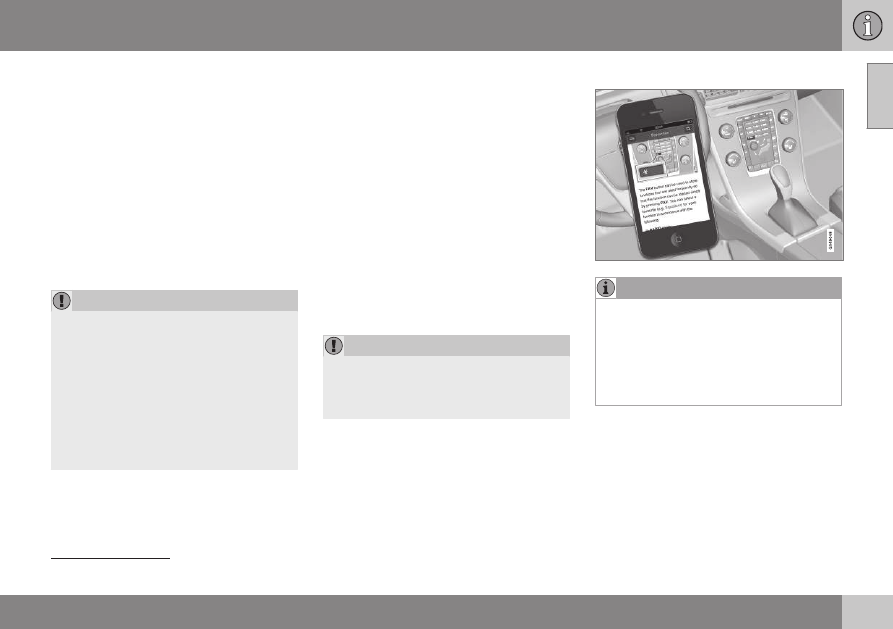Volvo V60 Plug-in Hybrid (2015 year). Instruction - part 1

01 Introduction
01
}}
*
Option/accessory, for more information, see Introduction.
13
Owner information
Your car is fitted with a screen which shows
information on how your car is working
1
.
For cars with owner information in the screen,
the printed owner's manual is a supplement
and contains important text, the latest
updates, as well as instructions that can be
useful when, for practical reasons, you are
unable to read the information on the screen.
Changing the screen's language may mean
that certain information is no longer in
accordance with national or local laws and
regulations.
The driver is always responsible that the
vehicle is driven safely in traffic and that
applicable laws and regulations are fol-
lowed. It is also important that the car is
maintained and handled in accordance
with Volvo's recommendations in the
owner's information.
If there should be a difference between the
information on the screen and in the prin-
ted manual then it is always the printed
information that applies.
Reading the owner's manual
A good way of getting to know your new car
is to read the owner's manual, ideally before
your first journey.
Reading the owner's manual will give you the
opportunity to familiarise yourself with new
functions, advice on how best to handle the
car in different situations and to make the
best use of all the car's features. Please pay
attention to the safety instructions contained
in the owner's manual.
The specifications, design features and illus-
trations in the owner's manual are not bind-
ing. We reserve the right to make modifica-
tions without prior notice.
© Volvo Car Corporation
Do not remove this manual from the car -
should a problem arise then the informa-
tion required about where and how to seek
professional help would be missing.
Owner's Manual in mobile devices
The owner's manual is available for down-
load as a mobile application (applies for
certain car models and mobile devices),
see www.volvocars.com.
The mobile application also includes video
and searchable content and easy naviga-
tion between different sections.
Options/accessories
All types of option/accessory are marked with
an asterisk*.
In addition to standard equipment, the
owner's manual also describes options (fac-
tory fitted equipment) and certain accessories
(retrofitted extra equipment).
1
Applies to certain car models.